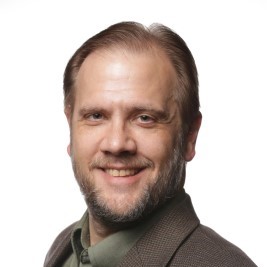About This Webinar
Part 3 of the 2021 Freeform Optics Series
Residual mid-spatial frequency (MSF) surface errors are common byproducts of the computer-controlled subaperture manufacturing techniques needed for fabrication of freeform optics. Falling between “low-frequency” form errors and “high-frequency” surface roughness, MSF “waviness” errors can affect optical performance in unexpected ways. In this presentation, Thomas Suleski, Ph.D., provides an overview of MSF surface error signatures, specification methods, and performance impacts.
Example approaches and challenges for modeling, specification, and mitigation of MSF surface errors are discussed, with a particular focus on the specification and impacts of anisotropic MSF error distributions.
To read more about the work behind this webinar series, see the group’s latest paper, “Freeform optics for imaging,” published by The Optical Society (OSA).
Part 1: "Freeform Optics for Imaging: Design Methods" on May 26, 2021.
Part 2: "Freeform Optics for Imaging: Manufacturing Methods" on May 27, 2021.

Who should attend:
Optical designers, engineers, those involved in the manufacture of optical systems, those involved in precision technologies, and anyone who is interested in current methods for freeform optics design and production. Freeform optics encompasses a range of disciplines and industries, including transportation, semiconductor, displays, lighting, IR and defense, photovoltaics, remote sensing, and even quantum optics.
About the presenter:
 Thomas Suleski, Ph.D., is professor of physics and optical science and site director of the National Science Foundation Center for Freeform Optics (CeFO) at the University of North Carolina at Charlotte. He has over 25 years of experience in optical design and manufacturing. He earned a Ph.D. in physics from the Georgia Institute of Technology, and he previously worked at Digital Optics Corp. with a wide range of military and commercial partners on the design, application, and manufacturing of micro-optical components and systems. He is a co-author of Diffractive Optics: Design, Fabrication, and Test and serves as senior editor for the SPIE Journal of Optical Microsystems. Suleski is the 2017 recipient of the John J. Turin Award for Outstanding Career Accomplishments from the University of Toledo and is a fellow of both The Optical Society (OSA) and SPIE, the international society for optical engineering.
Thomas Suleski, Ph.D., is professor of physics and optical science and site director of the National Science Foundation Center for Freeform Optics (CeFO) at the University of North Carolina at Charlotte. He has over 25 years of experience in optical design and manufacturing. He earned a Ph.D. in physics from the Georgia Institute of Technology, and he previously worked at Digital Optics Corp. with a wide range of military and commercial partners on the design, application, and manufacturing of micro-optical components and systems. He is a co-author of Diffractive Optics: Design, Fabrication, and Test and serves as senior editor for the SPIE Journal of Optical Microsystems. Suleski is the 2017 recipient of the John J. Turin Award for Outstanding Career Accomplishments from the University of Toledo and is a fellow of both The Optical Society (OSA) and SPIE, the international society for optical engineering.
About the sponsors:
Lambda Research Corporation, based in Littleton, MA, is a source for optical and illumination design solutions. Lambda's products include optomechanical software, optical design software, and a ray-tracing add-in program.